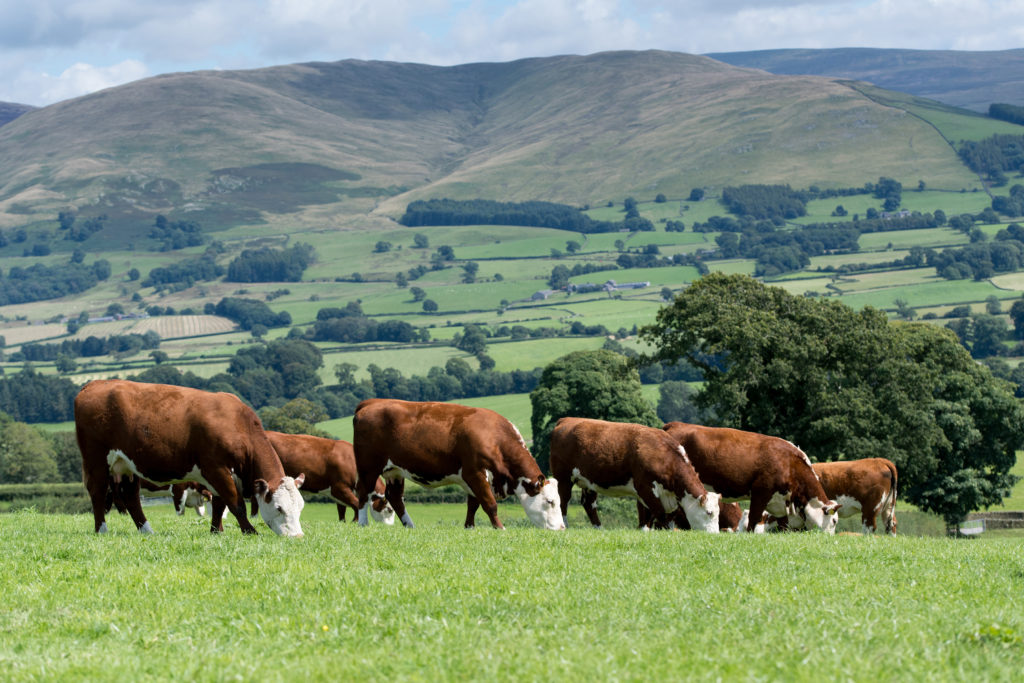

Herefords in the UK have seen a resurgence in recent times, Laura Bowyer, marketing manager at the Hereford Cattle Society told the World Hereford Conference’s international delegates.
In 2020, there are over 1,000 active breeders across England, Wales, Scotland and Northern Ireland which has increased by nearly 60 per cent over the last 10 years, she said.
“Over 9,000 pedigree calves are now registered each year, which is up nearly 50 per cent compared to 10 years ago. Looking at the equally important commercial numbers, over 185,000 Hereford sired progeny are now registered each year in the UK, including those on cross-bred suckler and dairy systems. This is an almost 90 per cent increase over the last decade.”
Not only does this show the Hereford Cattle Society is going in the right direction and the breed is gaining more and more momentum, but it also shows how commercially relevant and popular Herefords have become once again in the UK.
The number of branded Hereford Beef carcases which went through the system in 2019, saw an increase of over 350 per cent, compared to 10 years ago, added Laura.
Since the last World Hereford Conference in Montevideo, Uruguay in 2016, the Hereford breed has witnessed a string of price records in the UK.
“In autumn 2017, a record average price at a Society sale was set for heifers of just over £3,600.
“Spring 2018 saw a record average price at Hereford market for bulls of over £4,300, with a joint top of £8,200,” she said.
At the dispersal sale of Phil and Alison Allman’s Greenyards herd in January 2020, five year old cow Greenyards 1 Truelove M314 sold for a female centre record at Hereford market of £10,700.
The Designer Genes sale is a privately-run pedigree Hereford sale at Shrewsbury Auction Centre and in December 2018 a new public sale price record for a poll bull of £13,650 was set.
The society is also working towards more robust genetic analyses, in the form of genomics, and follows its move from microsatellite to single nucleotide polymorphisms (SNP) testing. The benefits of SNP testing include sire discovery without the requirement of the dam, future genomic evaluations and early decisions on animal’s destinies, traceability and food integrity, Laura explained.
The success of any future move to producing genomically enhanced EBVs will be dependent on the quality and quantity of the performance recorded data.
“We are encouraging breeders to embrace Breedplan, a free service to our members, and help the society move forward with this technology.
Hereford Beef has been in vogue over the past 18 months picking up a number of national awards, which is very encouraging and perfectly reflects its quality, she said.
“However, much work is still to be done in promoting Hereford Beef to the public, this is essential in order to provide existing and potential stockists of Hereford Beef with the confidence that consumers recognise our brand. Quality has never been an issue for Hereford beef but its recognition as a premium product has.
Laura said: “At the end of 2019, the society’s council appointed the services of a reputable London-based food PR and marketing agency, to work to raise the profile of Hereford beef, via both traditional print and online methods.
“We have an animal that is both prolific and efficient at turning forage into a high-quality source of protein, along with the associated health benefits of eating beef higher in omega 3 than that produced from a grain-based diet. As a natural grazing animal, the Hereford can also play an important role in sequestrating carbon by utilising a mainly grass-based diet, as this would help to build soil fertility, capture carbon dioxide and encourage wildlife.”